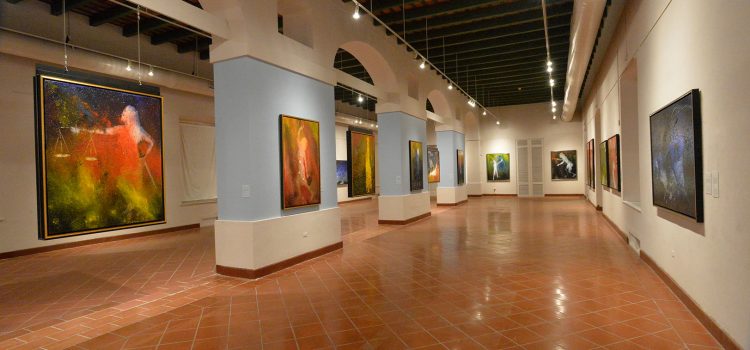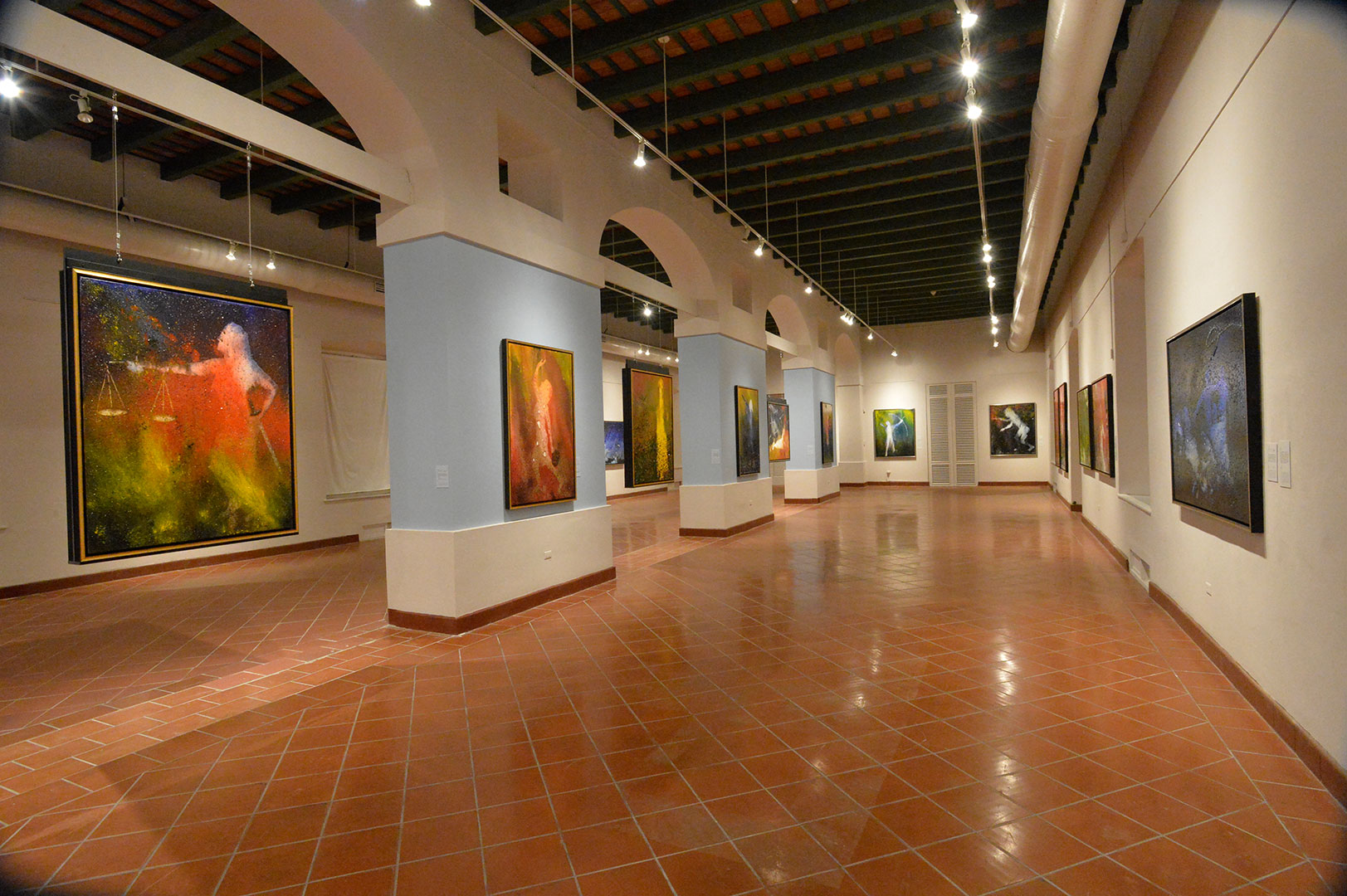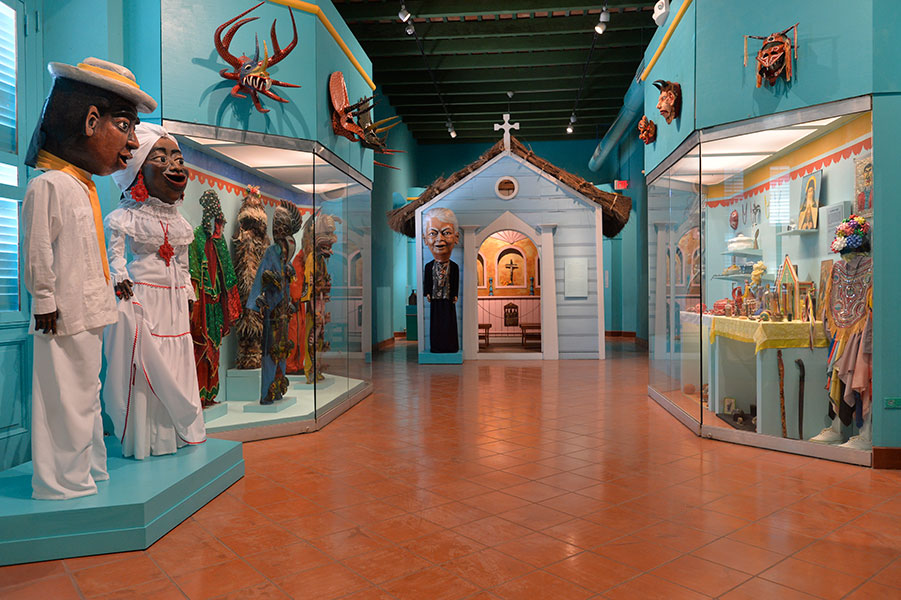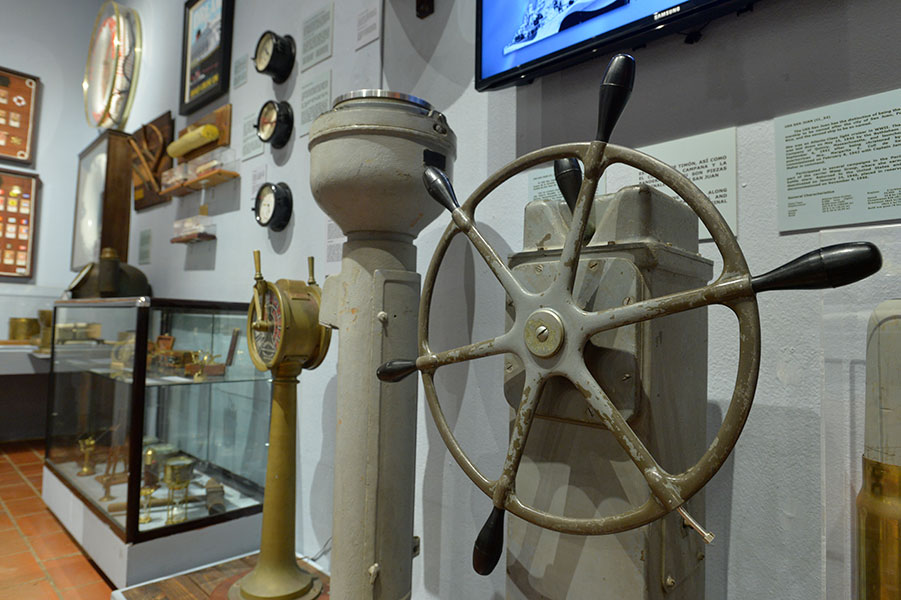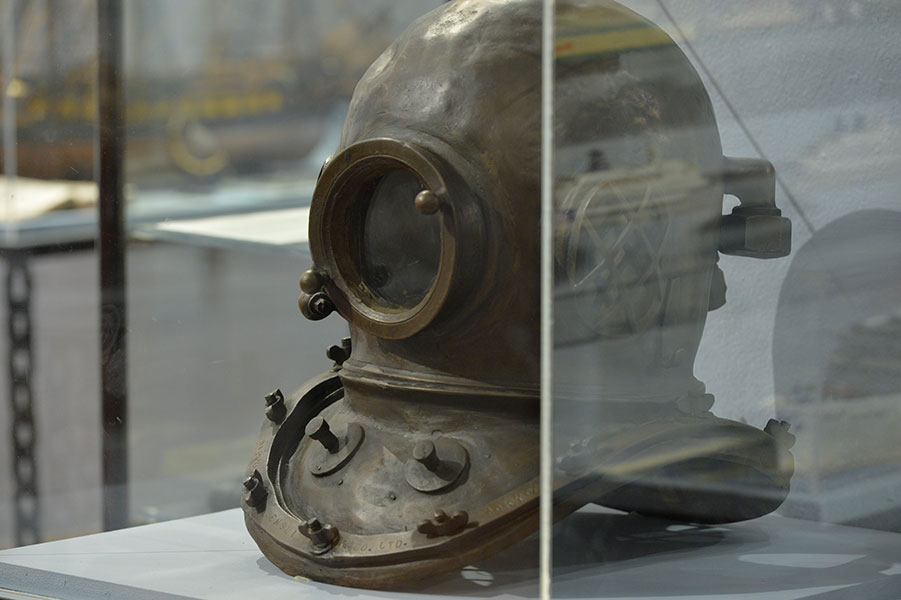What does an instrument used to steer a course using the bright stars, books published when printers were invented; folk art exhibitions, and a woman with a high bun who formed a network of schools and transported snow to the tropics have in common?
Well all the aforementioned subject matters are at your reach, walking distance at a choice of museums found in Old San Juan.
The Museum of Las Americas, La Casa del Libro, Maritime Museum and the Felisa Rincon de Gautier Museum are the original four institutions that formed part of the Cultural Alliance of Old San Juan, created to promote the cultural and historical spaces of the Old City.
Also part of the Alliance is the National Foundation for Popular Culture (folkloric music), the Art School of San Juan, the Casa Cortes Foundation (plastic arts) and the Reenactment Site in San Juan.
Bienvenidos visited the original museums to get an idea of what you’ll find to further enrich your experience with knowledge, beauty, history and culture in Puerto Rico.
Museo de las Americas
It’s the largest and grandest of the museums. The Musem de las Americas is located on the second floor of the Cuartel de Ballaja, a magnificent historic building from the 19th century constructed by the Spanish government to house troops and officers who worked on the grounds of El Morro San Felipe Fort.
The Museum de la Americas was founded in 1992 by archeologist Ricardo Alegria, responsible for the conservation and restoration of the historic architectural traits in Old San Juan.
Its mission is to offer a concentrated vision of the history and culture of the Americas from the pre-Columbian era to the present with an emphasis on Puerto Rico. It has four rooms with permanent displays and two with seasonal exhibits – plastic arts made by local and international artists.
The rooms with permanent exhibitions are “The Birth and Evolution of the Puerto Rican nation; and “The Indian of America,” that showcases 22 ethnicities that have survived the European conquest; “The African Heritage,” which is about the African culture of the Americas legacy and the fourth features Plastic Arts of Puerto Rico.
The exhibit about The Birth and Evolution of the Puerto Rican Nation describes in a brief manner through graphics, images, artifacts, and text the history of the Puerto Rican nation from the arrival of Juan Ponce de Leon to now,” said Museum Director Maria Angela Lopez. It includes text in form of bullets designed to be read by children as young as the age of seven.”
Lopez added the tourists who visit appreciate the exhibit because they take something home with them about Puerto Rico.
“Many visitors arrive without any idea about the history of Puerto Rico and here they take home a notion about where Puerto Ricans come from and the different events and processes that formed us as a nation.”
The Indian of the Americas Exhibit suffered damages in 2017 even though some of its main pieces, hyperrealism sculpture figures that represent members of the different indigenous ethnicities, and other artifacts were not damaged. This exhibit is expected to reopen during the second half of the year and is being redesigned to give more emphasis on the Taino culture – the indigenous that lived more than 500 years ago in Puerto Rico and Greater Antilles.
The Plastic Arts exhibit features pottery, basketry, homes and furniture, parties and traditions as well as traditional music instruments like the cuatro and marimbula. There is a small room with valuable models of wood saints made by the Ricardo Alegria collection.
“This is a multidisciplinary museum with elements of art, history, and anthropology that tell stories,” Lopez said. “Through the seasonal exhibits we balance the content of the permanent displays with more current and varied projects.”
In the rooms that feature seasonal exhibits, there will be a display in May and June by Ivan Girona, one of the most distinguished young artists of Puerto Rico.
Also, there will be a tribute exhibit of the Art School of San Juan during August and September to commemorate its 50 year anniversary.
Another option that will be presented from August to December is the Caribbean Ties exhibit that showcases indigenous of the Caribbean.
The museum has a store where you can buy handicrafts, books, music, and souvenirs. The general admission is $6 and $4 for children under 12 years of age as well as for adults over 62. There are tours in English and Spanish and it opens from Tuesday to Friday from 9 a.m. to 12 p.m. and 1 p.m. to 4 p.m.; and Saturday from 12 p.m. to 5 p.m. Every other Sunday of every month the museum holds an open house with free admission. For more information call (787) 724-5052 or visit www.museolasamericas.org.
Museo del Mar
Located on 360 San Francisco Street, just one block from Plaza Colon is an interesting place called the Museo del Mar. Here you will see the impressive side of the maritime history in Puerto Rico from civil to military to the arrival of the European conquerors with the expedition of Christopher Columbus in 1492 to date.
“We tell history through a collection of maritime articles, maps, models, images, and routing instruments,” said Manuel Minero, curator of the museum.
Close to the door is a map that demonstrates the voyages from an island that is now called the United States by Juan Ponce de Leon, the Spanish conqueror of Puerto Rico. He headed an expedition to Florida in 1512 and returned in 1521 when he died by arrows shot by indigenous of the region while searching for the mystical Fountain of Youth.
In the museum you can see a Spanish coin collection from the Conquista era like maravedies and real silver, the coin most used in America during those times.
An object, not too old but curious, is an autographed photograph of Christopher Columbus of Carvajal, and Duke of Veragua, a descendant of 18 generations of Admiral Columbus.
There is small scale replicas of the three ships used during the Christopher Columbus’ Discovery of America mission by the Europeans. They were made in 1992 for the 500 year commemoration event in Puerto Rico. The Santa Maria carried a crew of 40 and La Pinta and La Niña were two smaller vessels.
Aboard the vessels, Minero explained, were pilots that not only knew how to orientate themselves by using the stars but also drew the coasts to make cartographies. They submitted these drawings to the main pilot in Sevilla who would connect the drawings like a puzzle and develop maps.
One of the most interesting items in the museum is a mockup that illustrates the siege of the churches in San Juan in 1797. The movement of ships and troops in this battle by 6,000 Puerto Rican militants that supported the Spanish soldiers was decisive in repelling the attack.
And there was a replica of one of the barges that were used in the 18th century to extract sediment from the bay and sustain a secure canal for the entry of boats.
One of the most valuable objects at the museum is the astrolabe of Rincon that was constructed in 1616. It was found in 1987 close to the coast of Rincon, situated on the western region of the island. Similarly there are an assortment of replicas and styles of astrolabe that are old instruments used to navigate by using stars as a point of reference.
There are photos and mock ups of the Titanic, the most representative of the steam boat era. There are also pictures and memorabilia of the first steam boats in Puerto Rico that belonged to the Porto Rico Line, a company that started with Spanish and U.S. interests before the Hispanic American War in 1898 and remained with the owners of the U.S. During the First World War, the Germans sank a ship from this line, the Carolina that was departing from New York and another, Coamo was sunk by a German submarine in the Atlantic while it served as a barge hospital with injured soldiers aboard. These were cargo vessels but in 1917 most were converted into passenger vessels and it was the only commercial way to travel between Puerto Rico and the U.S. mainland, once traffic increased as Puerto Ricans obtained U.S. citizenship that year.
This continued to be the main mode of transportation to and from Puerto Rico in the 1940s and 1950s as air traffic began to rise.
The Museo del Mar has the largest collection of life preservers in the world, certified by the Guinness Book of World Records. Among them is one from Tynwald, which participated in the battle of Dunkirk during the Second World War and Grozny. The Soviet vessel tried to break the U.S. siege of taking nuclear missiles to Cuba and with its withdrawal it is believed was the reason for avoiding a nuclear war.
Also, there are assorted boat bells including one from the U.S. San Juan that fought in the Pacific during the Second World War. There is a flag from the boat that shows signs of shrapnel of some of the naval battles.
The Museo del Mar opens Tuesday to Sunday from 10 a.m. to 5 p.m. Admission is $5 for adults, $3 for seniors, and $2 for children.
For more information call (787) 977-4461 or visit the Facebook page: el museo del mar.
La Casa del Libro
Book aficionados have a place to visit on 255 Cristo Street. Inside a traditional large house situated in front of the iconic Cristo Chapel is La Casa del Libro, a museum and special library dedicated to the art of books and the display of rare books with historical value.
“The museum is dedicated to the culture and art of books from binding, printing, typography, engraving, calligraphy, illustration and photography,” said Museum Director Karen Cana-Cruz. “We alternate our exhibits every three to four months and then we present an exhibit of an artist or artists who work on the art of books.”
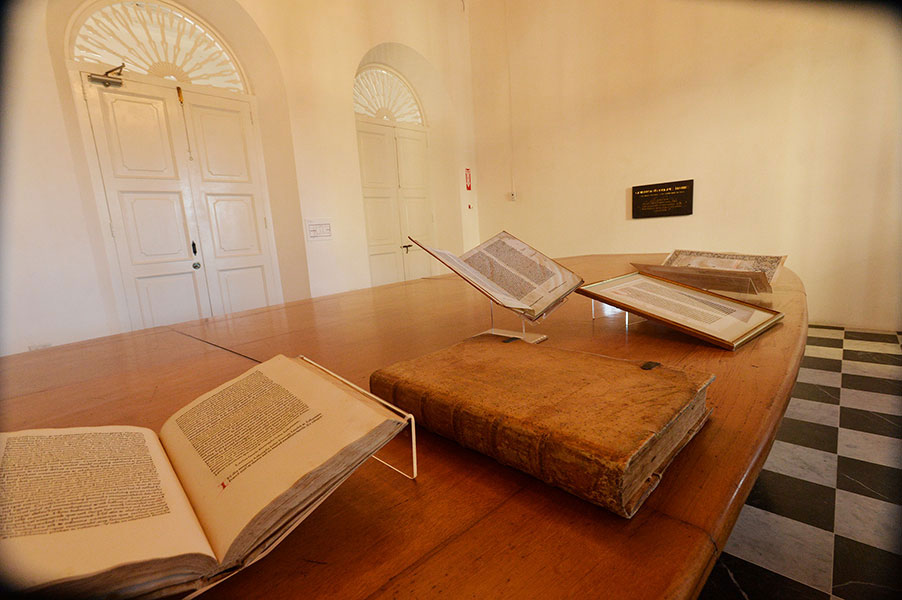
Casa del Libro is a museum and special library dedicated to the art of books and the display of rare books with historical value.
Founded by renowned editor and printer Elmer Adler in 1955, the museum has a collection of over 6,000 rare books which includes a volume of the first book in history never printed, the Chronicles of Nuremberg of 1493.
The collection includes valuable documents like one page of the first bible printed by the inventor of the printer, Johannes Gutenberg in 1454, Cana-Cruz added.
Also it has two manuscripts of 1493 signed by the Catholic Kings, Fernando of Aragon and Isabel of Castilla, which is believed to be the oldest documents to exist in America related to the expedition of Admiral Christopher Columbus to the New World.
“The invention of the printer increased the access of information in a way similar to the Internet during the end of the 20th century,” said Cana-Cruz. The collection of rare books includes 400 early prints from 1450 to 1490 – the first 50 years since the printer was invented.
All the rare books are not permanently exhibited only temporary selected volumes from the collection and the remainder is kept in a suitable condition for conservation.
On the first floor, antique presses are exhibited and among them is a French Koine of 1812 that arrived in Puerto Rico in 1867 and is believed was used by famous Puerto Rican writers like the poet Jose de Diego. Also you can see a Chandler & Price of 1903 and a Vandercook of 1925.
La Casa del Libro offers workshops from typography to the fabrication of paper and it has a store that permits visitors to buy reproductions, exposition catalogs, art, handmade jewelry, stationary, books and other unique gifts.
Admission is $4.50 adults and $2.50 students. Open Tuesday to Saturday from 11 a.m. to 5 p.m. For more information call (787) 723-0354 or visit www.lacasadellibro.org.
Felisa Rincon de Gautier Museum
A few minutes by foot from la Casa del Libro is the Felisa Rincon de Gautier Museum, dedicated to a variety of memorabilia of one of the most interesting personalities and ambassador of the history of San Juan in the 20th century, who was also mayor of San Juan for 22 years.
Waiting to greet Bienvenidos was Hilda Rodriguez, daughter of Hilda Jimanez, founder of the museum and former secretary of the mayor known to all as Doña Fela.
Doña Fela, who had a fashion boutique in Old San Juan, was a women’s-rights activist in favor of the right for women to vote and that privilege in Puerto Rico was achieved in 1932; six years later she helped initiate the Popular Democrat Party that dominated the island’s politics for three decades, and also was the mayor of San Juan from 1946 to 1968.
Upon retirement at the age of 71, Doña Fela moved and resided for three years in the house that was converted in 1987 into the museum dedicated about her life and she was able to enjoy it since she died at the age of 97 in 1994.
The first floor of the house has a great collection of photographs that included the legendary event where she transported in 1952 refrigerated snow inside a cargo plane to Luis Munoz Rivera Park in San Juan to show kids that never saw snow.
Doña Fela was a clever politician with ideas that captivated the imagination of the town like when she transported snow and her tradition to join the crowds and jump backwards into the ocean for good luck during the traditional Noche de San Juan celebration at Escambron public beach, which is also documented in the photo exhibit.
The mayor was known for her elegant attire and her Spanish hand fans and as she got older she was distinguished by a high bun and large dark glasses. On the second floor you can see her bedroom and outfits. Also, there is her large collection of Spanish fans and cute photos of kids dressed up as Doña Fela in school activities.
Besides being known for her colorful personality, Doña Fela is recognized for her hard work that includes developing public hospitals in the city, parks, roads, nursing homes, preservation of historical buildings in Old San Juan and the creation of a network of centers for pre-school kids that was avant-garde for its time.
When President John F. Kennedy visited Puerto Rico in 1961 he learned about the preschool centers program that was developed by Doña Fela in San Juan and he gave instructions to develop a similar initiative at the federal level in the U.S. mainland, which became the Head Start program that still is active. From that historic visit of Kennedy to Puerto Rico, two years before his tragic assassination in Dallas, there is an oleo portrait of him which he gave to Doña Fela as a personal gift.
The exposition includes photos of Doña Fela with Kennedy, Lydon B. Johnson and Richard Nixon and with vice president Hubert Humphrey, First Lady Eleanor Roosevelt and with New York Mayor Abe Beame, among other important political figures. Also, there was a handwritten thank you letter signed by Dwight D. Eisenhower after his visit to Puerto Rico.
Doña Fela was named a Goodwill Ambassador of the United States and also was a committee chairwoman of the Democratic Party in Puerto Rico.
Her distinction in U.S. political affairs and her photos with important politicians demonstrates her great influence in the Puerto Rican community in New York.
Kennedy was grateful for Doña Fela’s help and said that her participation with the Puerto Rican community in New York during the presidential campaign of 1960 was important in achieving his victory by a slight margin.
Although Doña Fela never finished high school because she took over the job of raising her eight younger siblings after being orphaned, she received 11 honorary doctorate titles that formed part of the museum’s exhibit and in 1954 she was named “Woman of the Americas.”
You can also see the 131 awards, plaques, and merits that were given to her by countries and cities and the 166 keys she received from different cities as an honorary visitor.
For more information call (787) 723-1897 or (787) 724-7239 or visit www.museofelisarincon.com/casamuseo.

